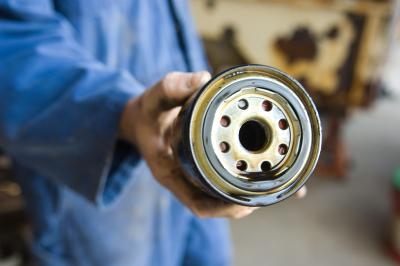
The oil in your engine is moved around via an oil pump, which is located in the oil pan. The pump picks up the oil and pushes it through the various oil galleries where it lubricates vital internal components, The oil then drains back to the oil pan, where it is again picked up by the pump. To monitor the amount of pressure the pump is working under, a pressure-sending unit is mounted in the system. This sending unit relays information to either a warning light,or a pressure gauge, depending upon how your particular vehicle is outfitted.
An oils' viscosity, or thickness, increases as the temperature decreases. An oil that is too thick will cause a higher than normal load upon the oil pump. During cold weather operations it is recommended a lighter viscosity oil be used. It is normal for the pressure gauge to read higher when the vehicle is cold, but if the reading does not return to normal when the engine is warm, a lighter viscosity oil should be considered.
Never run the engine with an oil level higher than the full mark on the dipstick. Too much oil in the system puts undue strain upon the oil pump and can cause a high pressure reading. Always check the oil level when the engine is cold. It takes time for the oil to drain back into the oil pan after the engine has been operated.
The oil filter has many small openings through which the oil passes as it is being cleaned. These filters have an internal bypass system that allows oil to flow, even if they are blocked. If the filter is blocked and oil is being diverted through the filters' bypass system, it will increase the oil pressure.
In some situations oil viscosity can actually increase over time. If the vehicle's fuel injectors are delivering too much fuel to the system, an increase of soot residue will result. This soot will find its way into the oil, where it will cause it to thicken, thereby raising pressure. Long periods of idling can also produce excessive amounts of soot.
If the oil galleries are blocked or restricted, they force the oil pump to work harder. As the oil gallery holes become smaller, due to a buildup of deposits, the natural oil flow becomes severely restricted, raising internal oil pressure.